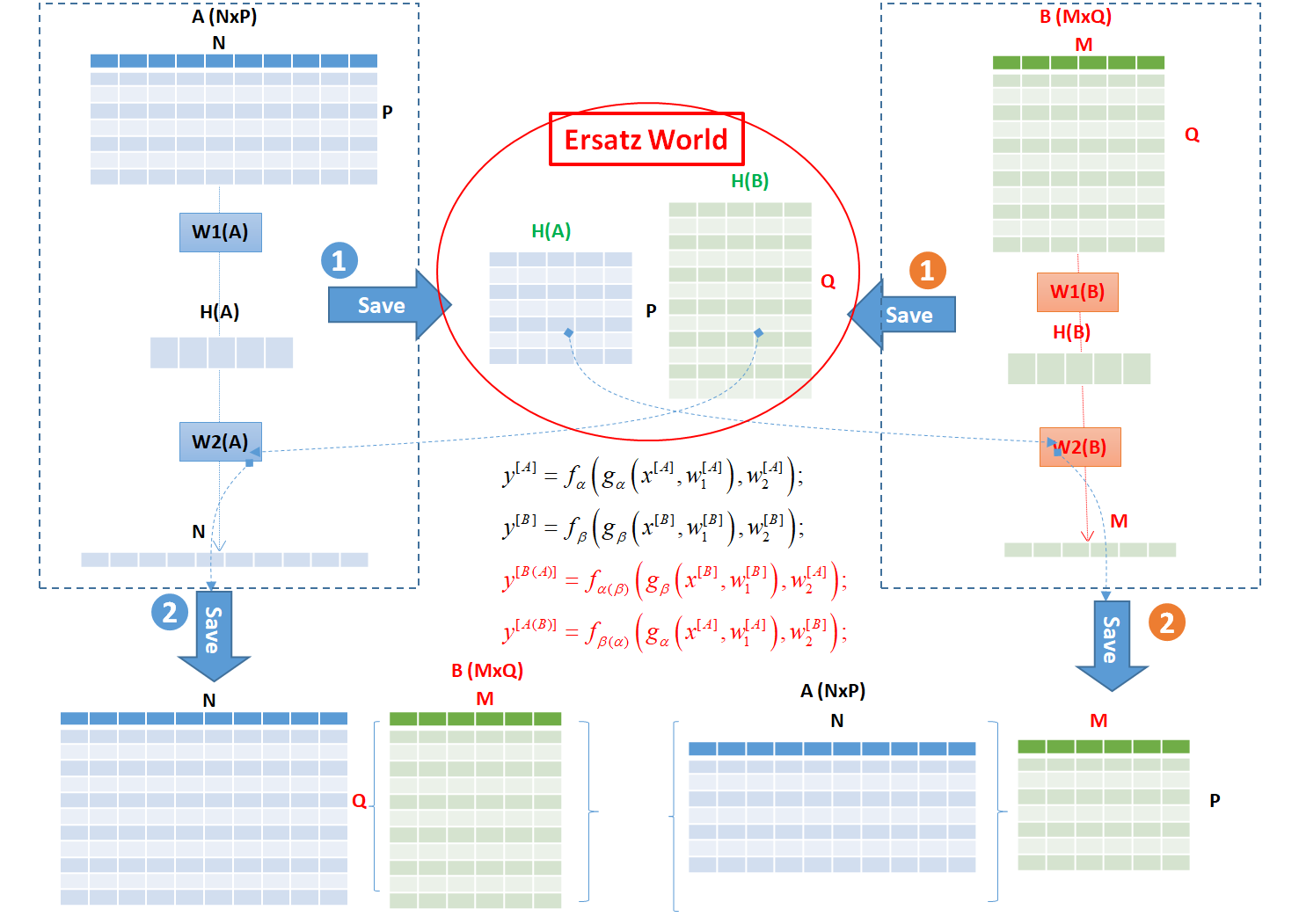The “Theory of Impossible Worlds” introduces an innovative approach to make possible the fusion between datasets in terms of attributes and observations, even when they are not related at all. It means that starting from datasets representing independent worlds it is possible to analyse a single global dataset and that the transfer of each dataset in the others is always possible.
This procedure allows a further deepening in the study of a problem by offering the chance of other independent points of view. The even unrelated datasets create a metaphoric representation of the problem, useful in terms of speed of convergence and predictive results, preserving the fundamental relationships in the data.
In order to get this shared knowledge, an auto encoder concurrently codifies all the different worlds by a new learning rule named double backpropagation .
P.M. Buscema, P.L. Sacco, F. Della Torre, G. Massini, M. Breda, G. Ferilli,
Theory of impossible worlds: Toward a physics of information
https://doi.org/10.1063/1.5024371, May, 2018.

